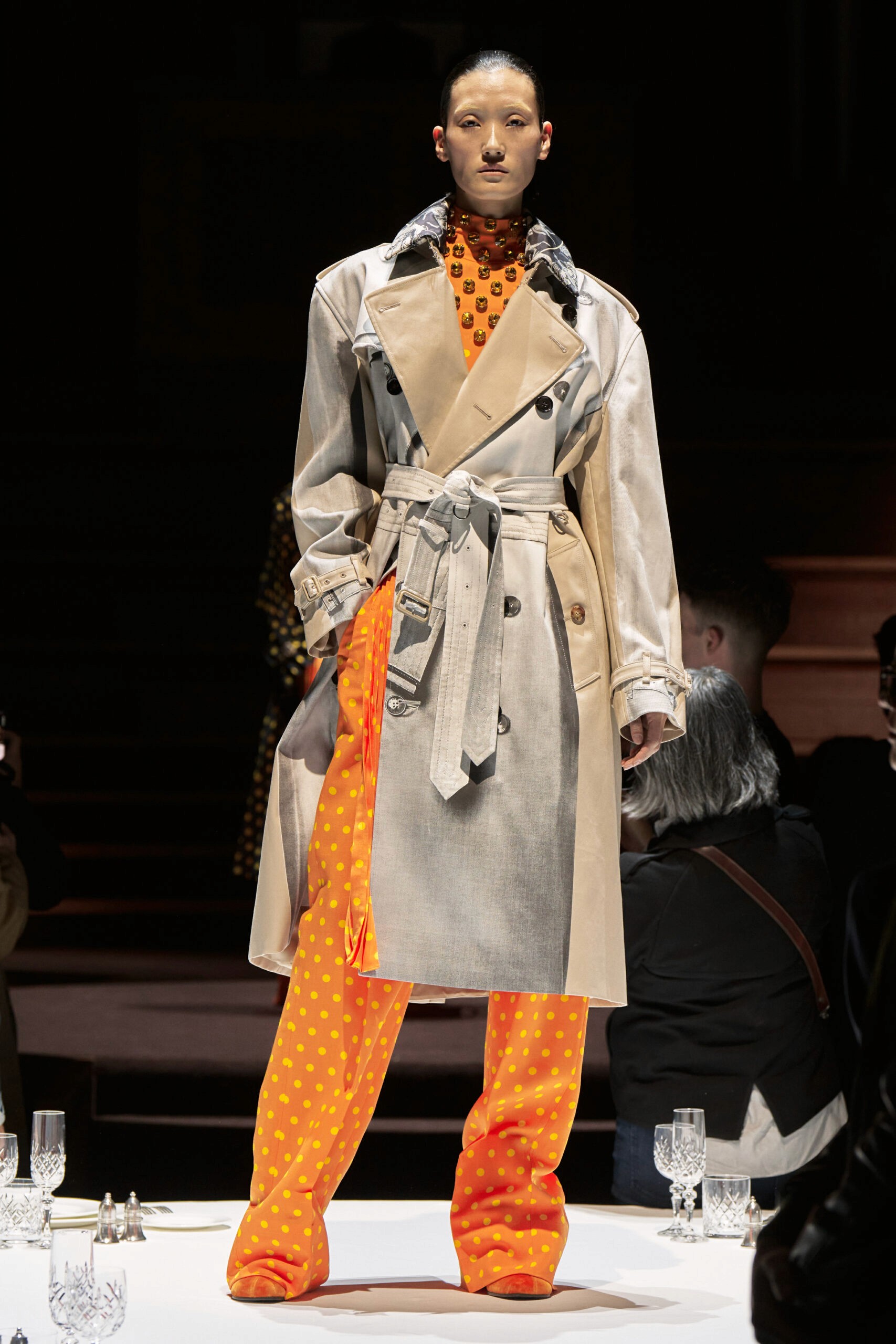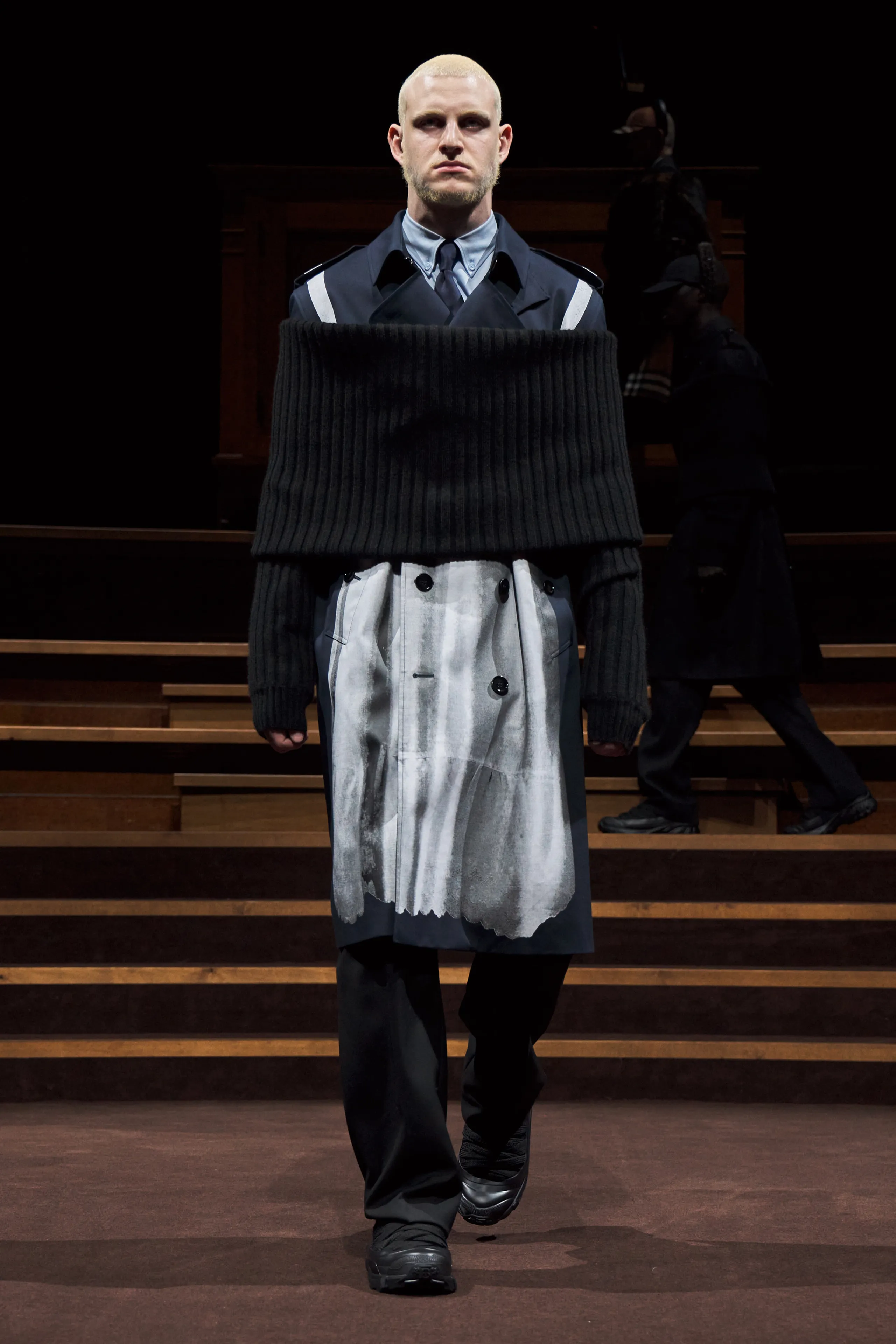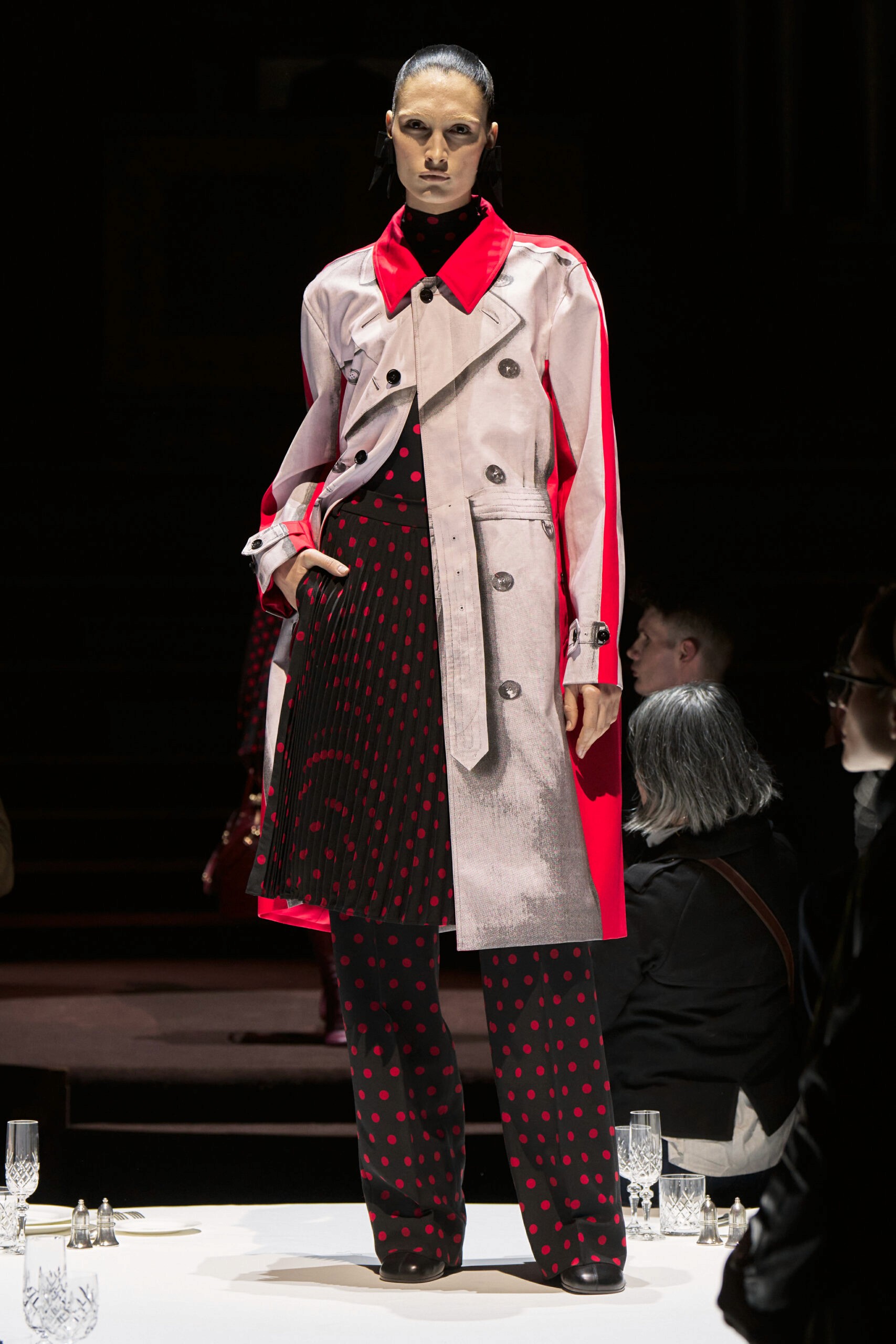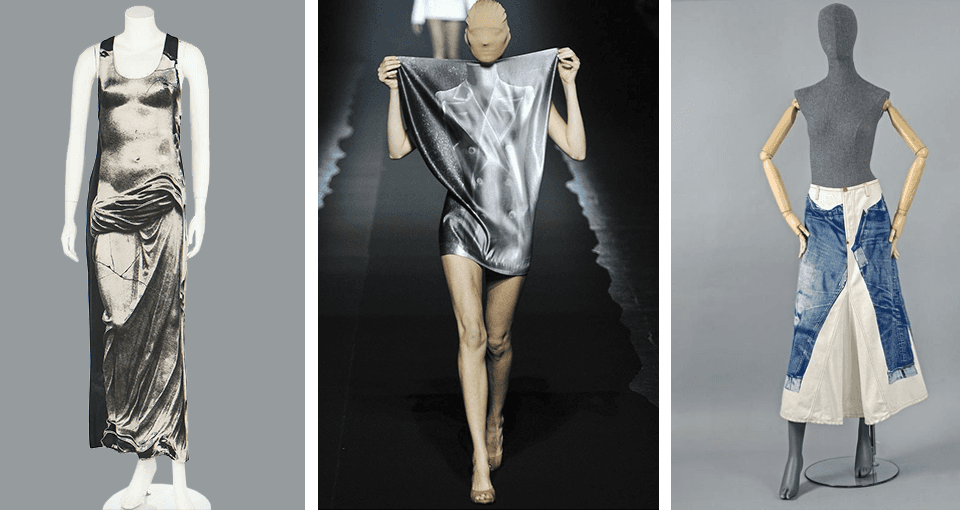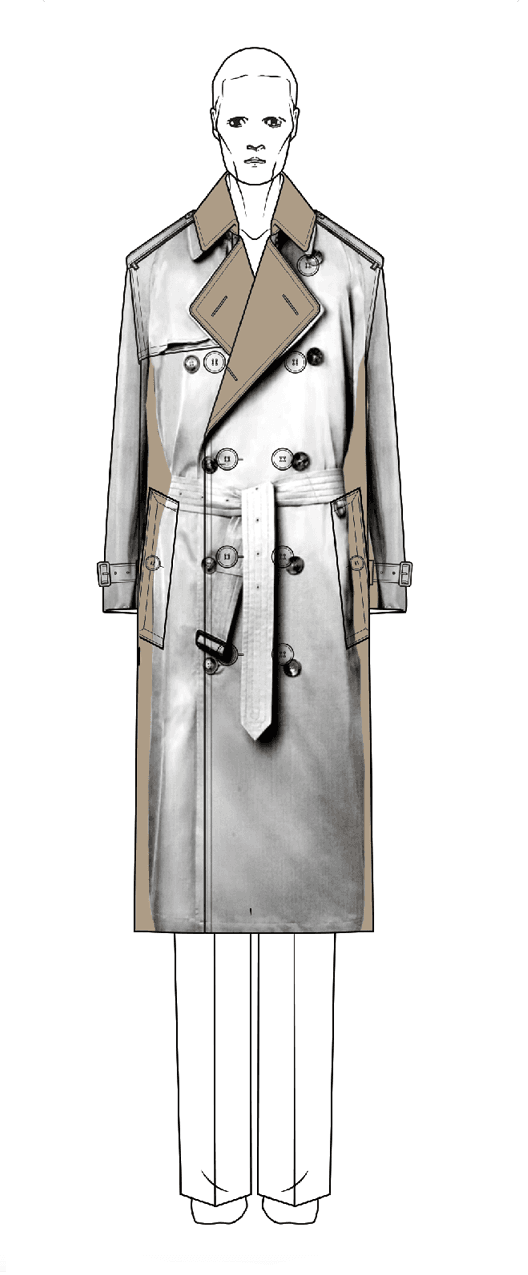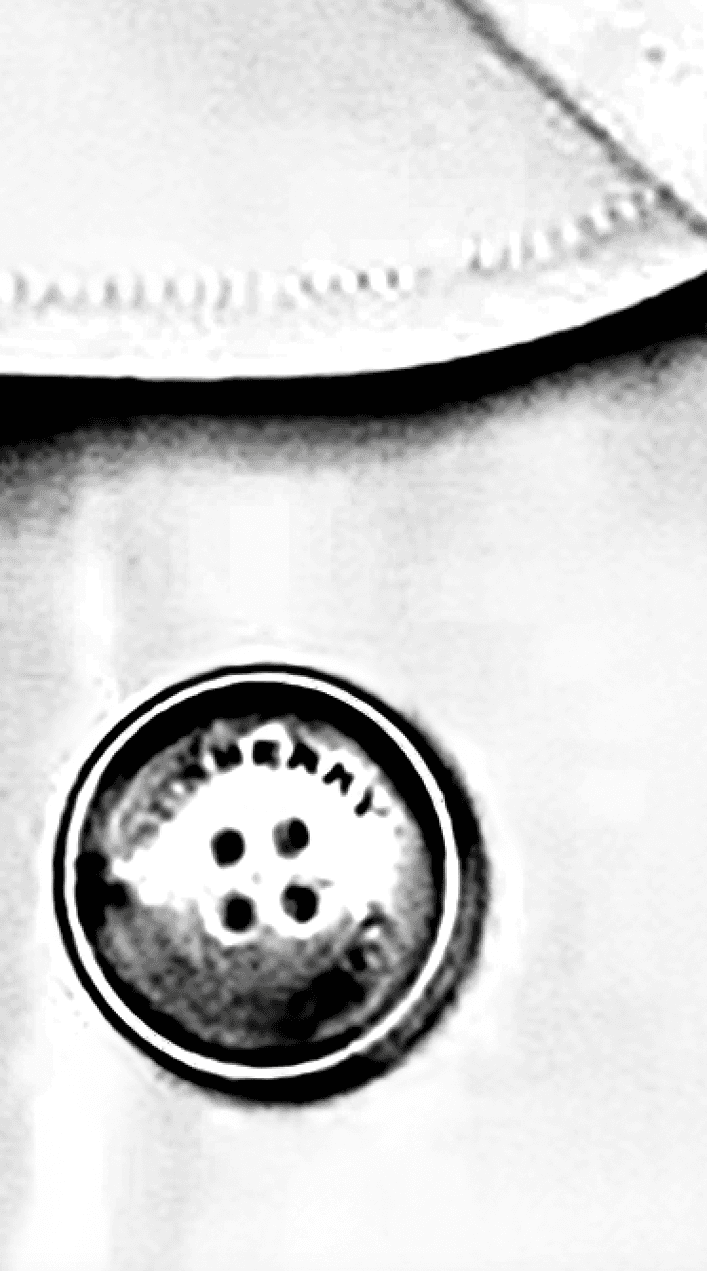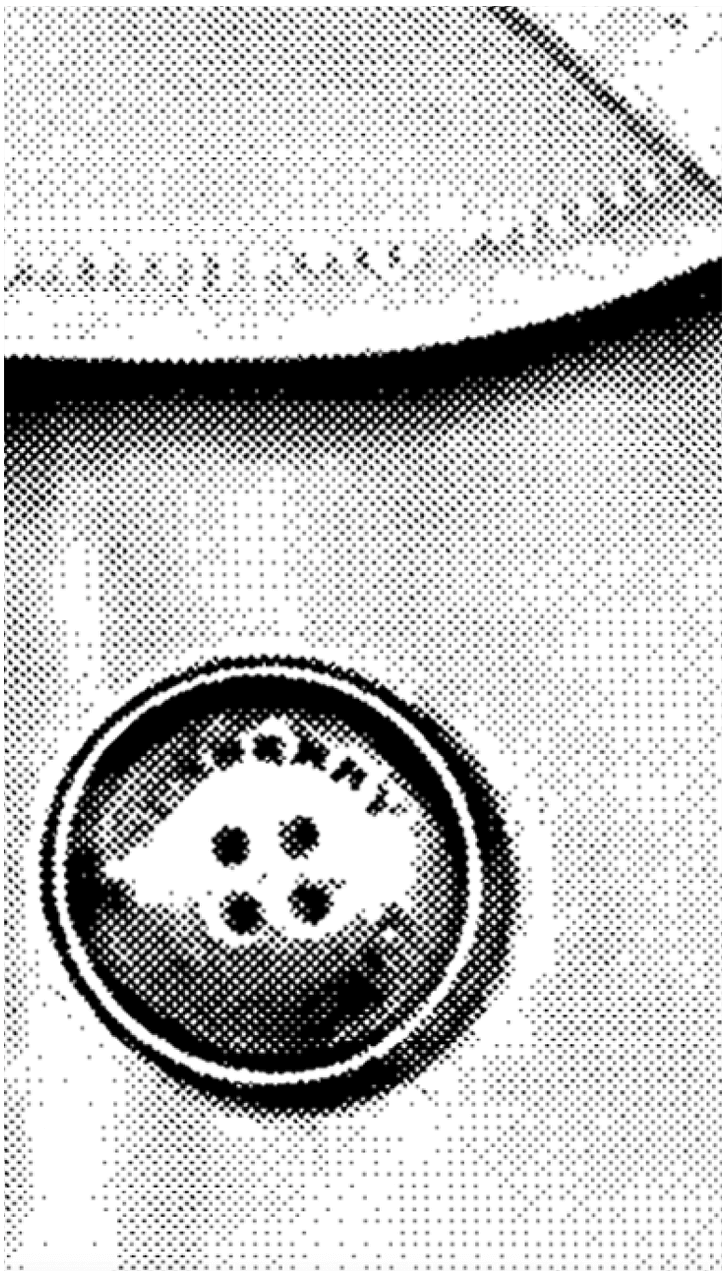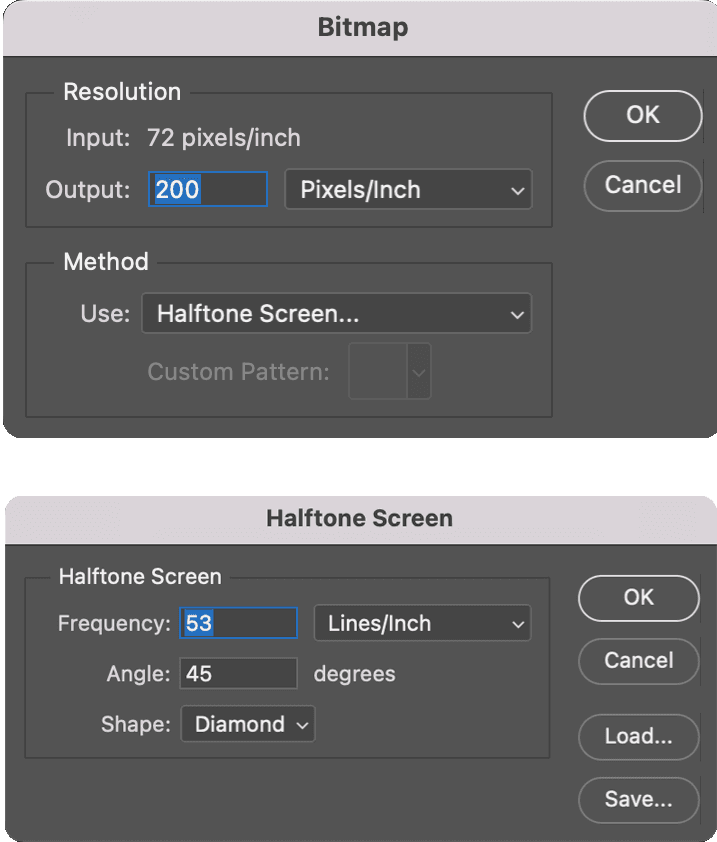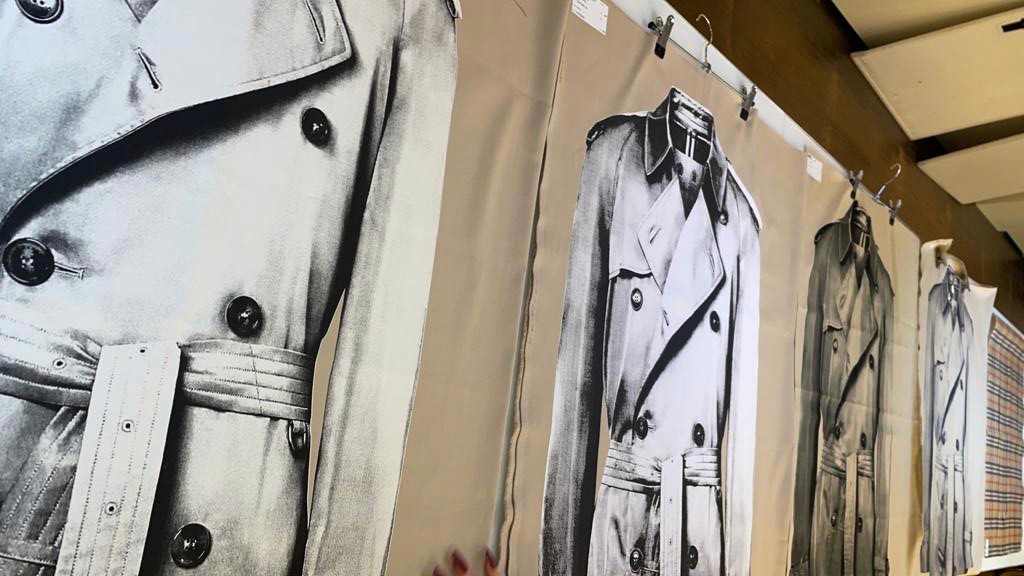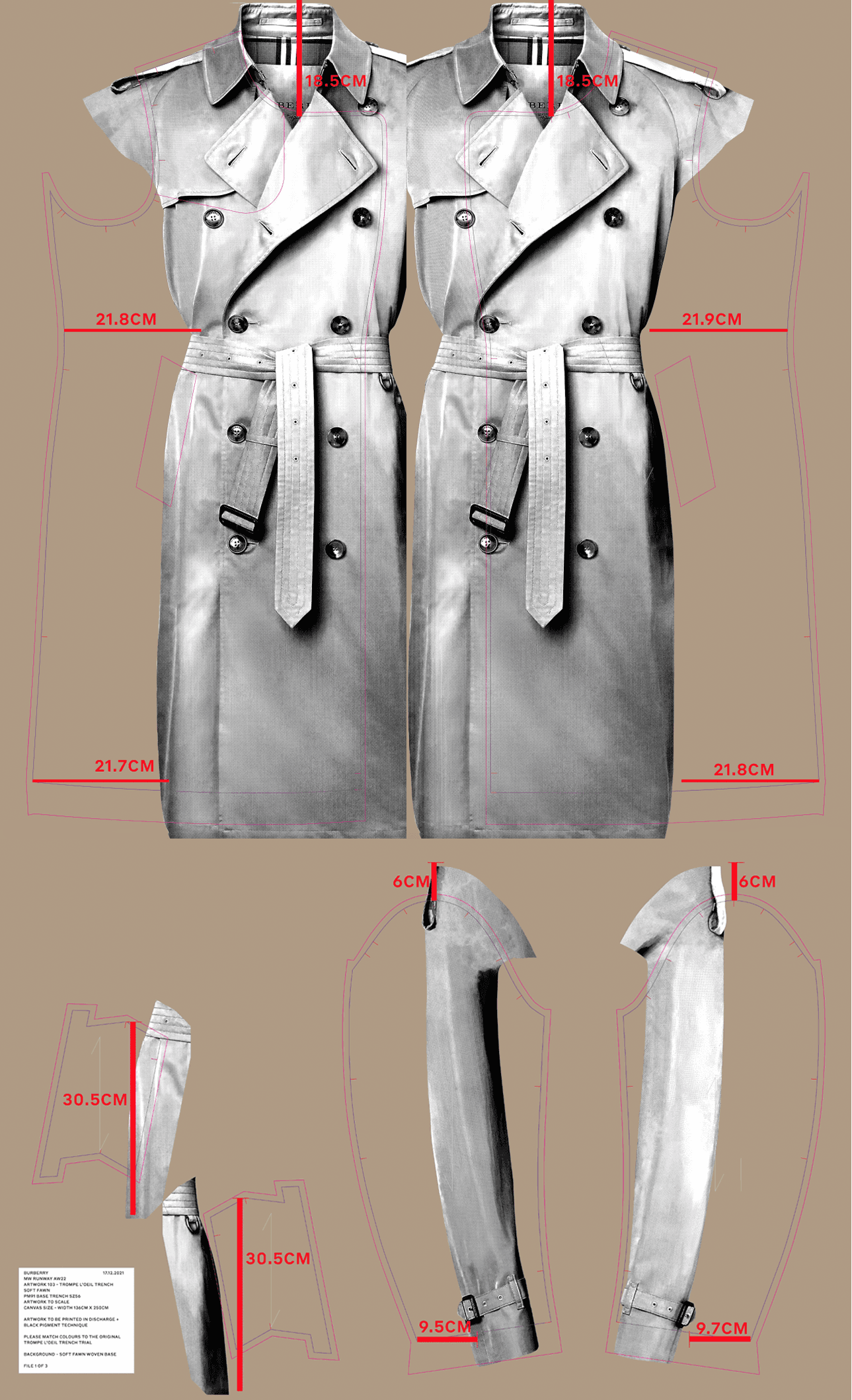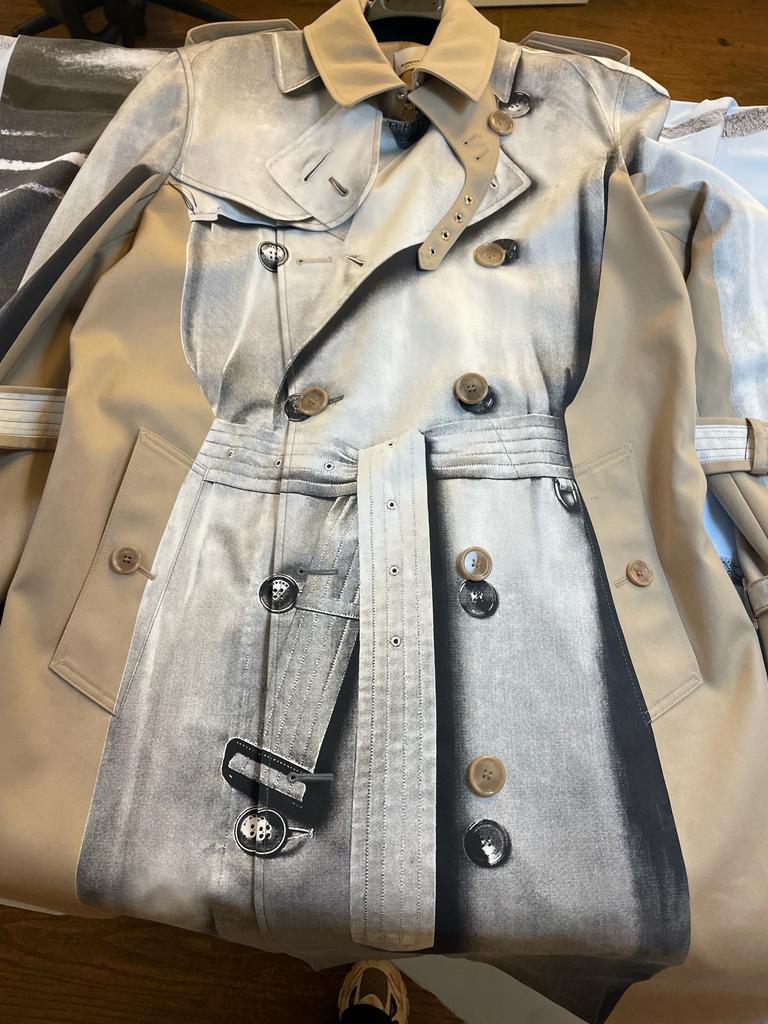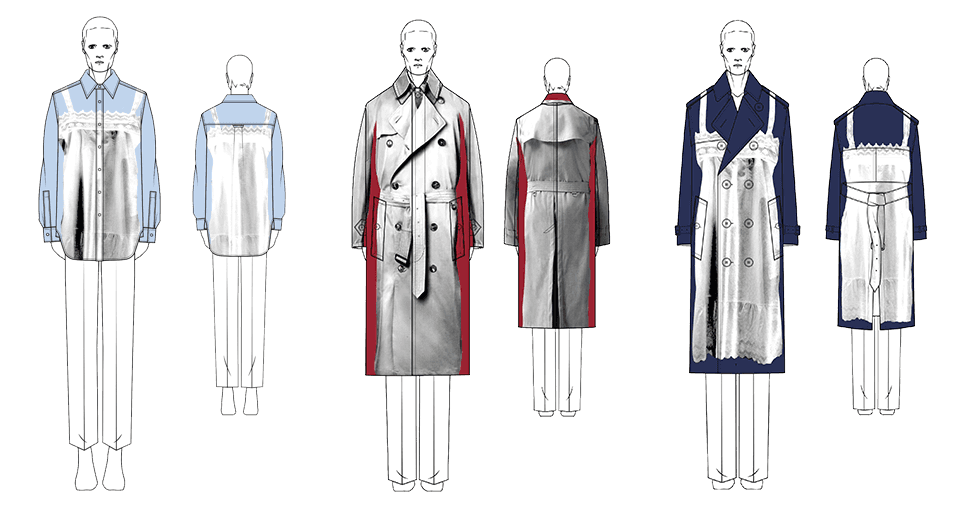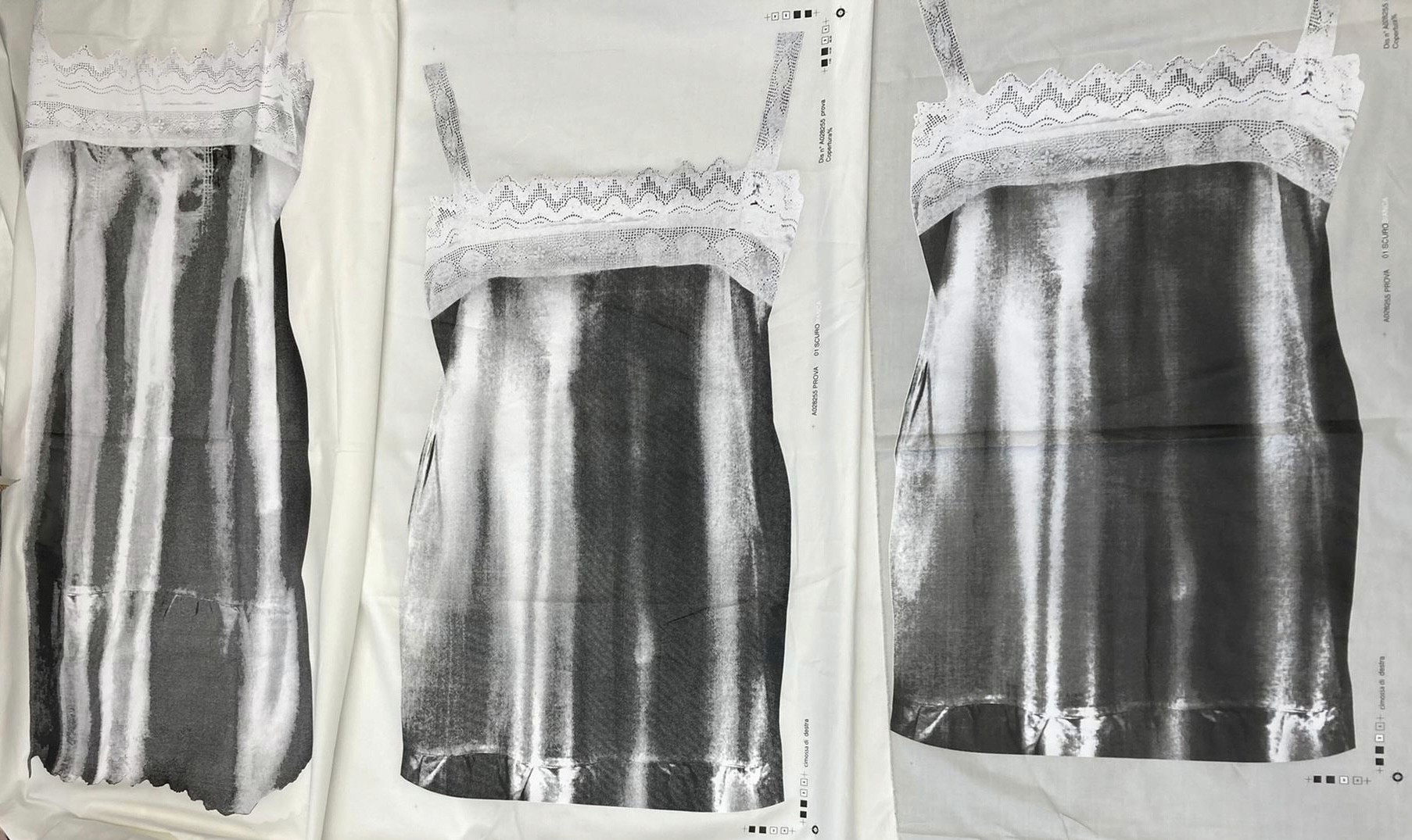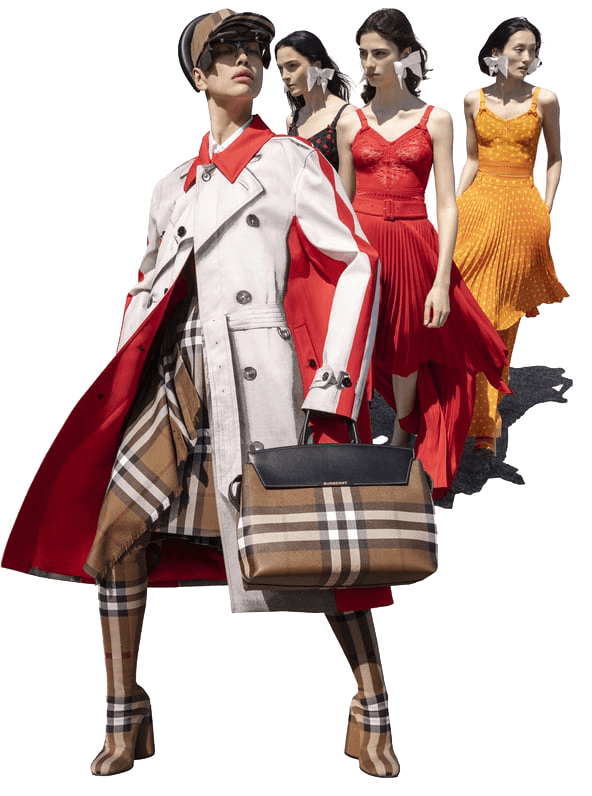In the creation of print and graphic design for Burberry's AW22 Show Collection, I specialised in uniting cross-functional teams and creative problem solving to deliver iconic brand-focused designs under tight deadlines.
Introduction
Main challenges in navigating the creation of AW22
Preparing the AW22 collection was brimming with design challenges. First and foremost there were the demanding tight deadlines that are intrinsic to the fast-paced world of high fashion.
Secondly coordinating the design, print, and product development departments was a continual task - each unit had its own priorities and vision, and bringing them to a consensus was pivotal.
Significant to this collection challenge was the introduction of the trompe l'oeil styles that our Creative Director was deeply passionate about. These styles, although aesthetically unique and captivating, posed numerous technical challenges during designing, printing and development.
Trompe-l'oeil designs had to produce an illusionary print that mimicked other garments.
Their integration into Burberry collection was to be achieved while maintaining the high-end feel Burberry is renowned for and ensuring the print's feasibility and cohesiveness across varying artwork ideas, garment types and fabric bases.
Achieving this vision demanded a wealth of creative problem-solving skills.
Translating vision to viable products in diverse contexts
Understanding the medium
Adapting trompe-l’oeil artworks to various fabrics required a mix of understanding of the material and creative problem-solving. Similarly, in digital design, I navigate the complexities of diverse devices and platforms to ensure designs are not only feasible but also resonate with the intended audience.
Cohesive design across varied contexts
While integrating the trompe l’oeil into various artworks and garment types for Burberry, there was a need to ensure cohesiveness in design. My experience in ensuring design consistency in diverse contexts makes me capable of crafting unified digital experiences that resonate across varied user touch-points.
Metodology
From vintage research to contemporary garments
Conducting research with an understanding of the creative director’s vision and Burberry’s distinct brand identity
In the online research the vintage trompe-l’oeil techniques from icons like Maison Margiela, Jean Paul Gaultier, and Schiaparelli became foundational. Their legacy of using playful illusions that mimicked garments or body parts resonated with our aim - a modern Burberry garment with an experimental touch.
Visual exploration through rapid mock-ups
I visualised my ideas via rapid mockups on Burberry sketch silhouettes. This allowed us not only to quickly visualise potential designs but also to present a diverse range of ideas for the creative director's selection, setting the stage for the next stages of intricate design development.
Tailoring artwork for optimal print techniques
Trompe l’oeil presents unique challenges depending on factors like the chosen print technique, fabric base, and desired detail depth. Our mission was to capture richly detailed grayscale artworks on colored outerwear while maintaining a luxurious feel. To achieve this, we opted for more traditional techniques, favoring their superior quality over digital print.
Determining printing techniques through preliminary trials
Having finalised the artwork, we launched it with the mill, requesting multiple trial runs using a range of screen printing and discharge techniques. Once the trials returned, collaborative discussions with the design team and creative director led us to select a method that combined screen printing for the black sections and discharge for the whites. This approach was chosen for its sharp appearance and a good hand feel.
For context : Discharge printing involves the application of a colour-eliminating agent, like chlorine or hydrosulfide. This agent acts to bleach out patterns, rendering them white or lighter, against a darker-coloured fabric backdrop.
Guiding the adaptation of approach for seamless print-to-garment integration
Transitioning from the conceptual stage, the next step was to align the print with the garment's pattern, ensuring it mirrored the chosen mock-up and provided a seamless appearance. While I initially oversaw this aspect, I delegated the task to a team member, offering guidance and monitoring the outcomes.
We encountered a small hiccup during this phase. The requirement to align prints on seams, necessitated specific manipulations, like warping, cutting, rotating, or clone-stamping. Given the bitmap effect applied to the trench, these alterations compromised the artwork's direction and clarity. Our solution was a shift in approach: first, we'd align and place the print using the unaltered original artwork and only after achieving a perfect match would we apply the bitmap effect.
print file
After the initial sample was positively received, the team got additional styles within the same concept and technique approved for development into garments.
From fashion processes to digital design strategies
Research-driven insights
In both the fashion and digital world, diving into design starts with a solid foundation built on research. The research informs the initial design phase and shapes creative decisions throughout the entire design journey.
Iterative design and ideation
From the initial concept sketches to more refined outcomes, the continuous cycle of development, presentation, and refinement is an iterative design process employed in product development.
Challenges
Diverse base colours in printing: Discharge technique limitations
After selecting additional mock-ups, I coordinated artwork preparation and printing trials for all fabric bases. However, the discharge technique proved ineffective on red and navy bases due to Burberry's waterproof coating on gabardine. Sourcing untreated gabardine within our tight timeline wasn't feasible.
Traditional screen printing was considered but unsatisfactory due to its heavy feel and lack of tonal gradation. In collaboration with my manager, we met with the printing mill. I proposed using smaller bitmap dots and layering white tones progressively using multiple screens. The mill team found this promising and introduced a denser screen for efficiency.
Subsequent trials improved but weren't perfect. We aimed to replicate the Creative Director's original paper artwork approval. By comparing trials to the original artwork, we provided feedback to the factory, highlighting adjustments for lightness, darkness, and paint intensity. Several iterations brought us closer to our goal, but due to time constraints, some imperfections remained, leading to compromises. The final technique was approved for production.
Bridging fashion and tech problem solving
Cross functional collaboration
My engagement with mills enhanced my ability to bridge creative and technical teams. This experience helps me ensure seamless collaboration between designers and developers for refined end-products.
My determination to align additional artworks with the original vision despite technical challenges reflects my commitment to creative solutions, which is extremely valuable in product design.
Results
Boosting show reception and brand visibility
After extensive challenges and iterations, we successfully integrated all the prints, ensuring the garments were ready for styling week. Out of these, three garments from this specific story—including both the red and navy bases—were showcased in the show. For a prestigious brand like Burberry, this is a significant accomplishment, given the meticulous quality standards and the potential for designs to be rejected.
The acceptance and success of these pieces not only underscored the quality of the work but also played a role in the overall positive reception of the collection. This achievement boosts brand visibility and augments future revenue potential for the commercial collection, as one of the styles was chosen for the campaign following the show.
Comprehensive project management and commitment to quality for brand value
Project management
Having overseen designs from concept to runway, I'm equipped to manage digital products throughout their entire lifecycle, ensuring each stage aligns with the final vision..
Commitment to quality
Having consistently met fashion's standards, I approach product design with attention to detail, emphasising intuitive UI, seamless UX and overarching business objectives.
Thank you!
Caroline Jaworsky
LET's connect
I find great joy in working with others and testing my skills in new environments. Whether you would like to collaborate on a project or simply want to chat, feel free to reach out to me.
Reach me here
linkedin.com/in/carolinejaworsky
jaworskycaroline@gmail.com
